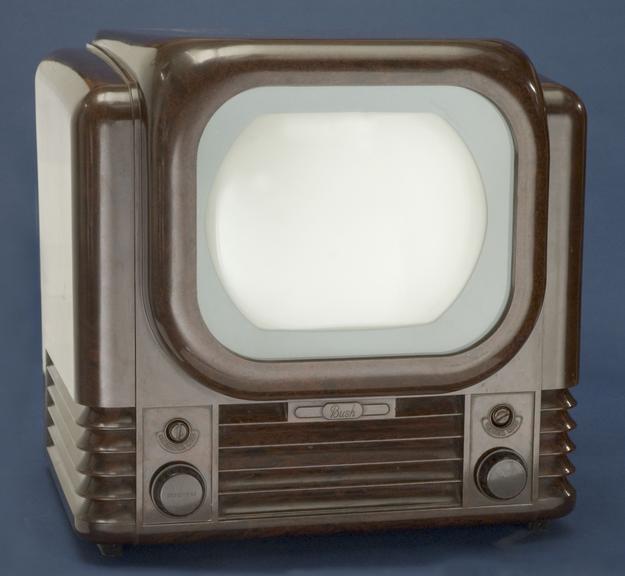

Bush TV22 television receiver, in 'walnut' bakelite case
- maker:
- Bush Radio Limited






A Bush TV 22 monochrome television receiver with a 9 inch screen and 'walnut' bakelite case. No Serial number. Fitted with Band convertor at rear. Bakelite was the first synthetic material used to make the cases for television sets. The TV 22 was introduced in 1950. Brown phenolic plastic case manufactured by British Moulding Ltd.
A Bush TV22 television receiver made of brown phenolic plastic c. 1952 in England.
Featuring a 9 inch screen the Bush TV22 was first made in 1950. It remained in production (with circuit improvements) for several years, and in 1955 a Band III converter was produced which could be fitted to existing sets to enable them to receive the new ITV programmes.
The TV22's main claim to fame is that it was the first British television that could be tuned by the owner to any one of the two then current BBC transmitters as well as the further three proposed channels.
The Bush TV22 is an icon of early 1950s bakelite sets and highly desirable today, although in its day it was one of the cheapest sets available (at £35 and 10 shillings) - it was intended for those who couldn't afford a set with a ‘proper’ wooden cabinet. The post-war timber shortage was the main reason why some TV manufacturers used other materials for the cabinets.
Details
- Category:
- Plastics and Modern Materials
- Object Number:
- 1979-624/271
- Materials:
- bakelite, glass, electronic components, cardboard and metal (unknown)
- Measurements:
-
overall: 380 mm x 410 mm x 420 mm, 16.34 kg
- type:
- television receiver
- credit:
- The National Media Museum, Bradford



